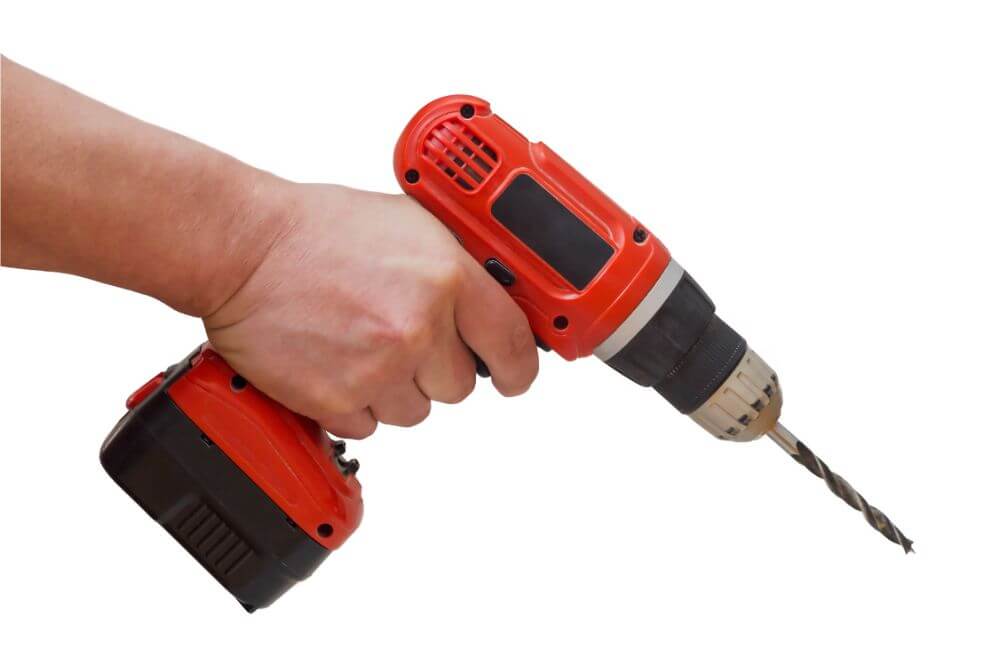If you are just learning how to use a cordless drill, one thing to understand is torque. Speed and torque are essential to adjust on a cordless drill. The speed setting is pretty straightforward—the higher the setting, the faster the drill spins.
However, what is torque, and what does it do? This article will discuss what the torque or the clutch setting on your drill does and why this is important. We’ll also walk through the process of how to set the torque on a cordless drill.
What is Torque?
Before we can talk about setting the torque on a cordless drill, you need to know what torque is. Torque is the rotational force that the drill can apply to the shank and, therefore, the drill bit or the fastener it is inserting.
Technically speaking, torque measures the force that causes an object to rotate about an axis. How fast a drill spins is essential, but speed is useless without enough muscle to insert that fastener. Therefore, torque is important in using a cordless drill for various purposes.
Sometimes you need a lot of muscle to get through very thick and dense materials. However, at other times, you need just a little power to insert a fastener without going too deep or ruining the material you’re working on.
The Torque Clutch on a Cordless Drill
To adjust the torque on your drill, you will need to use the clutch, otherwise known as the torque clutch. You might be familiar with the clutch on a standard shift vehicle. The clutch is used to shift gears in a car.
The clutch on your cordless drill is much the same. When you change the settings on your clutch on your cordless drill, it changes gears to allow for more or less force to be used. It’s all about how much force is applied to the fastener or drill bit before the motor disengages.
You might wonder why you even need a cordless drill with a clutch. The answer is that you need different amounts of force for different jobs. For instance, if you are screwing a large screw into a highly dense piece of wood, you will need a lot of power.

Without enough power, the drill won’t be able to drive the screw deep enough into the wood. And, in all likelihood, the drill will stop rotating and stop dead in its tracks. This is also the case with various large fasteners, especially when using hard and dense materials.
On the other hand, if you are inserting a fastener into a relatively soft material, you need to be gentler, especially if you are working with something like drywall or other delicate hardware. If you overdrive the fastener too deep into the material, it will damage it. You don’t want your screw going too deep into the material.
Many construction specialists and professionals would use a handheld screwdriver to drive small screws into fragile materials. They used handheld screwdrivers before the invention of cordless drills with torque clutch settings. It’s about getting the right depth, consistency, and protecting the material underneath.
How to Set the Torque on a Cordless Drill
The good news is that adjusting the torque on your cordless drill is easily done using the clutch. If you are unfamiliar, the clutch is located on the front of the drill. It’s a circular dial that gets narrower at the front, located near the shank.
You will see a series of numbers written around the circular dial or clutch. The higher the number, the more torque the drill will apply.
Therefore, to adjust the clutch, move it to a lower number for less torque or a higher number for more torque. The adjustment itself is easily made. Simply take the clutch with your hand and twist. You will see a little arrow that indicates which number you have selected.
For example, if you are working with drywall, you want to set the torque anywhere between one and four—the lower, the better for drywall. However, if you are drilling into wood or inserting relatively large screws, start somewhere in the middle.
Moreover, working with a very dense hardwood or treated lumber will need more torque, probably close to the maximum. For the best results, do some research before choosing the torque level for the job.
Conclusion
You should now know what torque on a cordless drill is, what it does, and how to adjust it.

